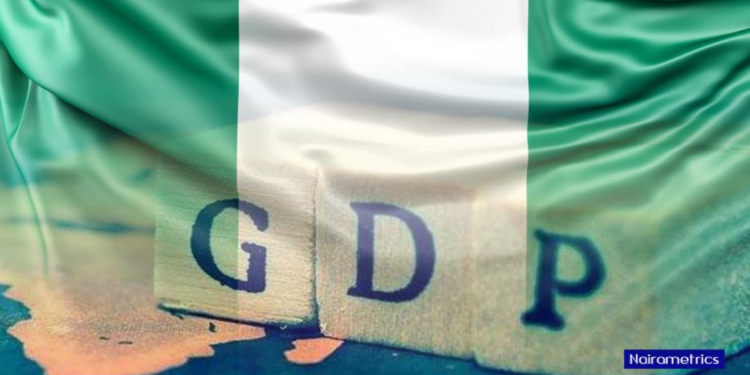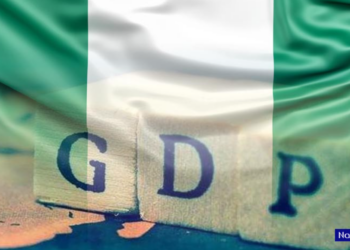Nigeria’s public debt-to-GDP ratio dropped to 39.4% in Q1 2025, following the successful rebasing of the country’s Gross Domestic Product (GDP) by the National Bureau of Statistics (NBS).
The rebasing exercise, which expanded GDP coverage to include sectors such as the digital economy, fintech, creative industries, and the informal sector, significantly increased Nigeria’s nominal economic output and improved its debt sustainability profile on paper.
As of March 31, 2025, Nigeria’s total public debt stood at N149.39 trillion, comprising N78.76 trillion in domestic debt and N70.63 trillion in external debt, according to data from the Debt Management Office (DMO).
With the rebased GDP now valued at N379.17 trillion (which covers the 12-month period from Q2 2024 to Q1 2025), the total debt stock represents 39.4% of GDP.
This is slightly below the self-imposed limit of 40% debt to GDP set by the government and the 55% threshold set by the World Bank and International Monetary Fund.
The breakdown shows that domestic debt accounts for 20.77% of GDP, while external debt contributes 18.63%.
Nairametrics, however, observed that while the country’s overall debt-to-GDP ratio at 39.4% is a notable improvement from pre-rebasing levels, it is slightly higher than the 38.8% recorded in Q4 2024.
Rebasing cuts 2024 debt ratio below self-imposed debt-to-GDP limit
A similar trend was observed in data from Q4 2024, where the debt-to-GDP ratio also declined sharply following the rebasing. Nigeria’s total public debt as of December 31, 2024, stood at N144.67 trillion, with N74.38 trillion in domestic debt and N70.29 trillion in external debt.
Before the rebasing, GDP was estimated at N277.49 trillion, putting the debt-to-GDP ratio at 52.13%. However, with the rebased GDP adjusted upward to N372.82 trillion, the ratio dropped to 38.80%. Domestic debt’s share fell from 26.80% to 19.95%, and external debt dropped from 25.33% to 18.85%.
The rebasing exercise contributed to a significant recalibration of Nigeria’s debt profile, painting a more favourable picture of macroeconomic stability. While the nominal debt level remains unchanged, the enlarged GDP base reduces the relative burden, improving key fiscal ratios and enhancing investor perception.
What you should know
Nigeria’s total public debt rose to N149.39 trillion as of March 31, 2025, marking a year-on-year increase of N27.72 trillion or 22.8% when compared to the N121.67 trillion recorded in the corresponding period of 2024.
The data also indicates a quarter-on-quarter increase of N4.72 trillion or 3.3% from N144.67 trillion as of December 31, 2024. This consistent upward trajectory in Nigeria’s debt stock reflects both fresh borrowings and the impact of a depreciating exchange rate on external debt obligations.
The reduction in Nigeria’s debt-to-GDP ratio comes at a time when public discourse is heating up over the sustainability of government borrowing.
A lower ratio could give the government more room to borrow for capital projects, support economic stimulus, and attract better credit ratings. However, this statistical improvement does not reduce actual debt obligations or the rising cost of servicing them especially with the weaker naira and mounting external liabilities.
It also sets the tone for fiscal policy in the medium term. As Nigeria prepares its 2026–2028 Medium-Term Expenditure Framework (MTEF), these new ratios could influence borrowing plans, fiscal projections, and negotiations with international lenders.






















